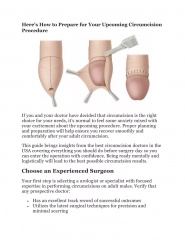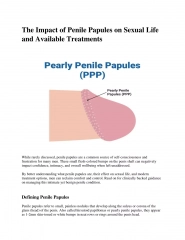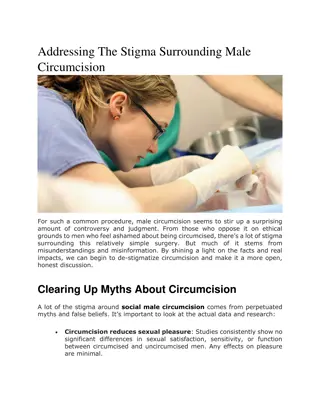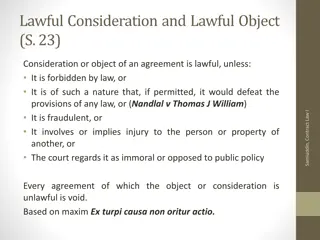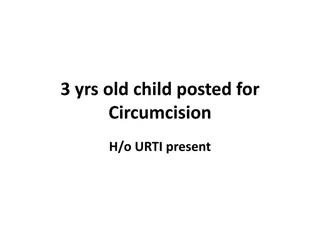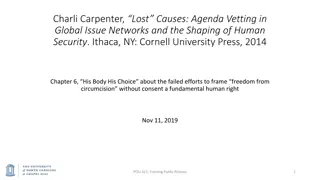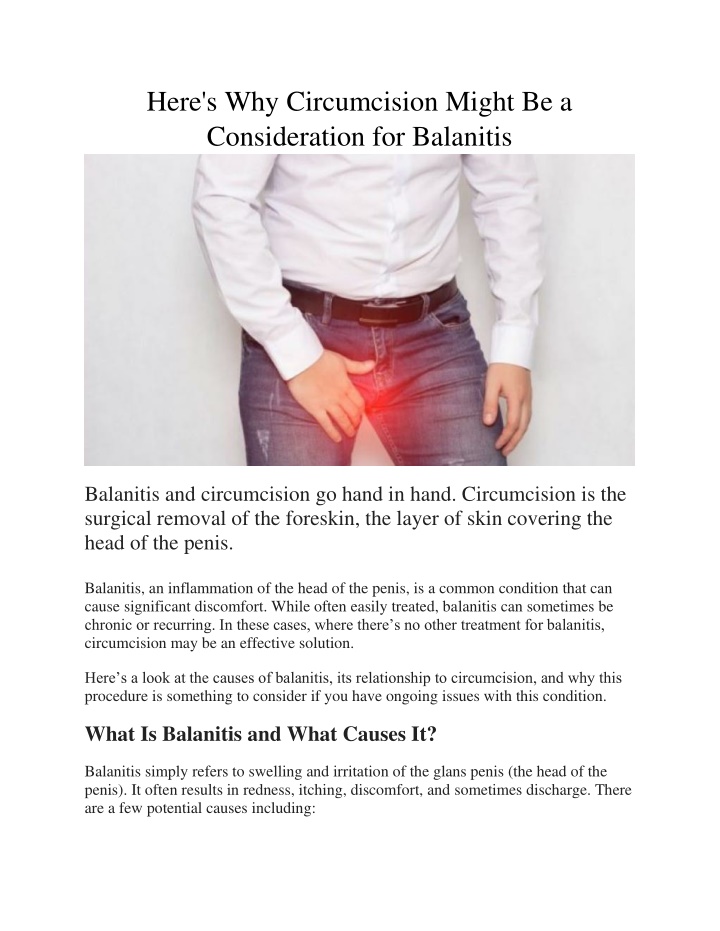
Heres Why Circumcision Might Be a Consideration for Balanitis
Balanitis and circumcision go hand in hand. Circumcision is the surgical removal of the foreskin, the layer of skin covering the head of the penis.
Uploaded on | 1 Views
Download Presentation

Please find below an Image/Link to download the presentation.
The content on the website is provided AS IS for your information and personal use only. It may not be sold, licensed, or shared on other websites without obtaining consent from the author. If you encounter any issues during the download, it is possible that the publisher has removed the file from their server.
You are allowed to download the files provided on this website for personal or commercial use, subject to the condition that they are used lawfully. All files are the property of their respective owners.
The content on the website is provided AS IS for your information and personal use only. It may not be sold, licensed, or shared on other websites without obtaining consent from the author.
E N D
Presentation Transcript
Here's Why Circumcision Might Be a Consideration for Balanitis Balanitis and circumcision go hand in hand. Circumcision is the surgical removal of the foreskin, the layer of skin covering the head of the penis. Balanitis, an inflammation of the head of the penis, is a common condition that can cause significant discomfort. While often easily treated, balanitis can sometimes be chronic or recurring. In these cases, where there s no other treatment for balanitis, circumcision may be an effective solution. Here s a look at the causes of balanitis, its relationship to circumcision, and why this procedure is something to consider if you have ongoing issues with this condition. What Is Balanitis and What Causes It? Balanitis simply refers to swelling and irritation of the glans penis (the head of the penis). It often results in redness, itching, discomfort, and sometimes discharge. There are a few potential causes including:
Poor hygiene:When the area under the foreskin isnt properly cleaned, a buildup of dead skin cells and bacteria can cause infection and inflammation. Skin conditions: Eczema, psoriasis, and other skin problems can sometimes affect the penis and lead to balanitis and circumcision of the penis ultimately. Allergic reactions: Allergies to things like latex condoms, lubricants, or even laundry detergent can trigger balanitis in some men. Fungal infections: Yeast infections are a common cause of infection on the penis. Candida fungi naturally live on the skin but can overgrow in warm, moist areas. Bacterial infections: Bacterial infections can occur under the foreskin and cause inflammation. Typical infections include streptococcus and staphylococcus. NLS (non-specific balanitis): In many cases, balanitis has no clear cause. When no other cause is found, it is referred to as non-specific balanitis. Proper hygiene is usually the first line of treatment for balanitis. But when it becomes a chronic problem, circumcision may be the best solution. How Circumcision Helps Prevent Balanitis Balanitis and circumcision go hand in hand. Circumcision is the surgical removal of the foreskin, the layer of skin covering the head of the penis. This simple procedure is often done for religious or cultural reasons. But it also has some medical benefits like reducing the risk of urinary tract infections and sexually transmitted diseases. When it comes to balanitis specifically, circumcision can help in a few key ways: Eliminates hiding spots for bacteria: The moist environment under the foreskin can allow infectious bacteria and fungi to thrive. Removing it leaves nowhere for these microbes to accumulate. Prevents foreskin tightness: Some men have foreskins that are too tight to retract fully, which can lead to tearing and make hygiene difficult. Circumcision eliminates this problem. Reduces risk of allergic reaction: Because the sensitive head of the penis is exposed, there is less contact with potential allergens or irritants that could cause inflammation.
Improves hygiene: With the foreskin removed, it's easier to keep the area clean on a daily basis. Soap and water can easily reach all surfaces and prevent problematic buildup. For those who deal with repeat bouts of balanitis, circumcision is often recommended as a way to reduce occurrences long-term. The effects can be dramatic, with some studies showing over a 90% decrease in balanitis risk among circumcised men. What to Expect With Adult Circumcision Circumcision is simpler and safer when performed during infancy. But it is also an option for adult men. If you're considering adult circumcision due to balanitis, here is a quick overview of what to expect: Consultation: You'll meet with a urologist to discuss your goals and health history. The most appropriate technique will be chosen. Preparation: Antiseptic wash and antibiotics may be used to optimize healing. For safety, blood thinners are stopped temporarily. Procedure: You'll receive anesthesia, either local or general. Using sterile technique, the foreskin is freed from the head of the penis and removed. Stitches: Dissolvable sutures are used to close the incision. These will fade over time. Healing: Minor soreness, swelling, and bruising are common initially. Full recovery takes 4-6 weeks. Results: The head of your penis will be exposed. Hygiene is easier and you are less prone to inflammation. When done by an experienced urologist, complications from adult circumcision are rare. But as with any surgery, there are some risks like bleeding, infection, and scarring. Your doctor can help you weigh the pros and cons. Weighing the Decision Carefully The choice of whether to get circumcised as an adult is a very personal one. There are many factors to take into account. Be sure to: - Discuss thoroughly with your doctor
- Consider both the risks and benefits - Think about your cultural preferences and sensitivities - Involve your partner in the decision when possible - Don't rush into it; give yourself time to reflect carefully For those with chronic or recurrent balanitis that persists despite proper hygiene and topical treatments, circumcision can be an effective solution. But it's not a choice to be made lightly. Talk to your urologist to find out if it may be right for your situation. FAQs About Circumcision for Balanitis Does circumcision completely cure balanitis? In most cases, yes. By removing the foreskin, two major causes of balanitis are eliminated: poor hygiene and foreskin tightness. Studies show over a 90% reduction in balanitis among circumcised adult men. How long does it take to recover after an adult circumcision? Recovery typically takes 4-6 weeks. There may be minor soreness and swelling for the first week or two. Most men are able to return to work within a few days. Sexual activity can usually be resumed after about 4 weeks. Is circumcision very painful? The procedure itself shouldn't be painful since anesthesia is used. Mild discomfort is common during the healing process but is manageable with over-the-counter pain medication. Any severe pain should be reported to your doctor promptly. Does circumcision affect sexual pleasure or function? Most men report little to no change in sexual satisfaction, stamina, or sensation after circumcision. A minority may notice decreased sensitivity initially, but pleasure typically returns to normal over time as the skin adapts. Balanitis and Circumcision: Finding the Right Treatment If you deal with balanitis, don t just suffer through it silently. See your doctor to explore the available treatment options. While topical creams, improved hygiene, and
other remedies are often effective, circumcision offers a permanent solution for men with chronic or recurrent inflammation of the penis. Though not a minor decision, it can eliminate the repeated discomfort of balanitis once and for all. And if you are looking for expert guidance or treatment for balanitis or any other penile issues, contact California Adult Circumcision. We offer the best solutions for penile papules treatment, frenulum removal surgery, penis aesthetic enhancements and more. Get in touch with our experts today. Visit Our Website: California Adult Circumcision



